There are a lot of political opportunists in Kenya praying day and night that Raila Odinga’s moving to be the AU Chairperson will finally destroy his political hopes and influence in Kenya and help dismantle ODM as a big-time political party in Kenya.
Some of them are under the illusion that William Ruto is supporting Raila to go to the AU to achieve those ominous goals. History will disappoint them and their desperate hopes. And as far as we all see William Ruto is very sincere about his support and promotion of Raila Odinga to be the next AUC. That is a good thing for the country.
Starting with the hoped fights within ODM, the party has shown incredible maturity in dealing with the issue of their most prominent leader leaving for the AU job which will keep him doing continental work and not part of the day-to-day functioning of the party and being part of national politics.
Those internal fights are not happening much to the chagrin of those waiting for a blowout in ODM. First of all the AU job does not start until March 25, 2025. So Raila is at home with ODM for a whole year and will be part of ODM and Kenya politics for that whole time.
Secondly, Raila himself and key ODM leaders are looking forward to a smooth transition and not some chaotic and shambolic infighting.
Raila Taps Joho, Oparanya To Lead ODM If He Gets AU Commission Job
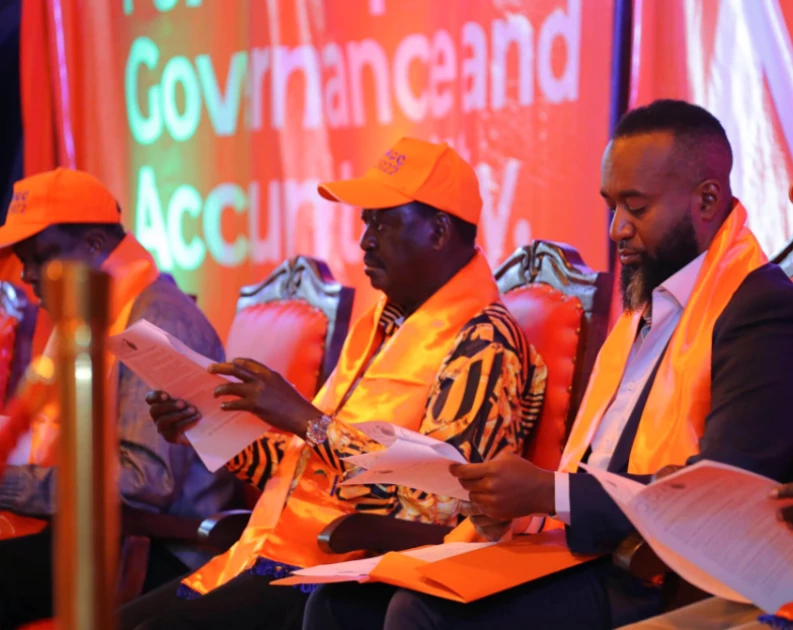
According to media reports, Orange Democratic Movement (ODM) party leader Raila Odinga has picked former Governors Hassan Joho and Wycliffe Oparanya to lead the political outfit should he succeed in his bid to become the next Africa Union Commission Chairperson.
“Mr. Odinga, speaking on Thursday during an ODM recruitment rally in Wajir County, intimated that the two leaders are the men for the job in case the AUC job forces him to exit the Kenyan political space.
He exuded confidence in the two deputy party leaders saying they have what it takes to unite the opposition outfit and its people.
“I am here with Governor Oparanya and Hassan Joho; vinara wa ODM. You see these two people, they will unite together. ODM ni chama ambacho kiko na msingi kamili bila kusambaratika,” he said.
“A party is not a person but the members and leaders. I am confident that these two will be able to lead the party effectively. Si wanatosha?” He posed amid cheers from the crowd.
The ODM chief, who also doubles up as the Azimio la Umoja One Kenya coalition party leader, further reassured his supporters that he would continue to offer advice to the pair even after he clinches the AU job.”
Those who were hoping for a breakup in ODM were looking at many angles but their biggest hope was tribal warfare in ODM which will make the party irrelevant in national politics. Their wishful thinking was that the first warfare within ODM would be a fight among Luo leaders in ODM where the Babu Owinos, the Opiyo Wandanyi’s, the Ochilo’s, and others would be fighting for who is the next Luo Kingpin after Raila. They were even talking of something called generational transfer of ODM leadership whatever that means. That internal tribal war is not happening because the Luo politicians are more mature than the ODM enemies thought.
The other reason that expected fight within the Luo community is dead in the water is because a lot of the opportunists in ODM from the Luo community like the Kideros, the Okoth Obados, the Owalos, and so many others put themselves in political dustbins when they run over to Ruto as the new Luo leaders chasing Ruto all over and begging him for jobs and for recognition as new Luo leaders.
Some will say there is a need for Luo leadership and that is fine with me because we all know our country and the fact is that every community has its leaders in the national political arena whether those are established leaders or emerging ones. The Luo community is not any different and in terms of emerging leaders we have so many and some not even in politics.
If you asked me I would say Gladys Wanga, the Governor of Homa Bay county is already an established Luo leader with so many unique qualities and a development agenda. If anybody wants to know, the Luo community has no shortage of leaders at every level of our life as a country. Whether it is politics or the schooling and academic life of our country and they love it. Maybe too much.
Another tribal fight ODM enemies were praying for is where different communities are demanding they take the ODM leadership. Under that illusion, Oparanya would be leading the Luhya community in demanding that they take the ODM leadership from Raila. The Coast communities under Joho would be demanding that it is their time to be at the helm of ODM because they have supported the party for decades. The dream of this tribal war was to have ODM split into four different parties. These were the dreams of ODM enemies and the maturity of ODM is turning those dreams into nightmares.
Remember FORD which turned into FORD Kenya, FORD Asili, and even FORD Ng’ombe or FORD People led by Simon Nyachae, a Moi diehard political clown whose aim was to keep Moi in power.
Party Leader
Hon. Jaramogi Oginga Odinga
1992 – 20th January, 1994
He was the Doyen and opposition magnet in Kenya. He was charismatic and revered by the ‘Young Turks’. Together, they increased democratic space and raised the pressure for enactment of a new Constitutional framework in Kenya for multi-party in Kenya in 1992.
He made FORD-Kenya to be the Official Leader of the Opposition in Parliament between 1993 and 1997.
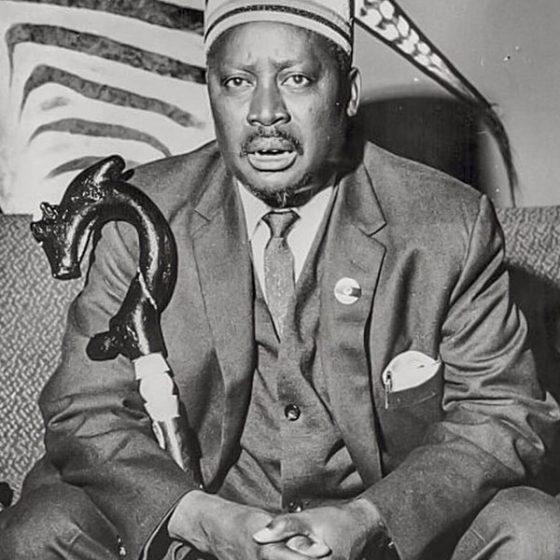
Kijana Wamalwa
1994 – 23rd August, 2003
An intellectual luminary, ‘Young Turk’, an orator, and a shrewd statesman. He forged Opposition Unity (NARC) in 2002 to rout the KANU regime from power. He became the Vice-President and secured six Ministerial slots for the party.
His call for a ‘Grand March to State House’ elevated the party to the highest level of achievement in quest for leadership of the nation.
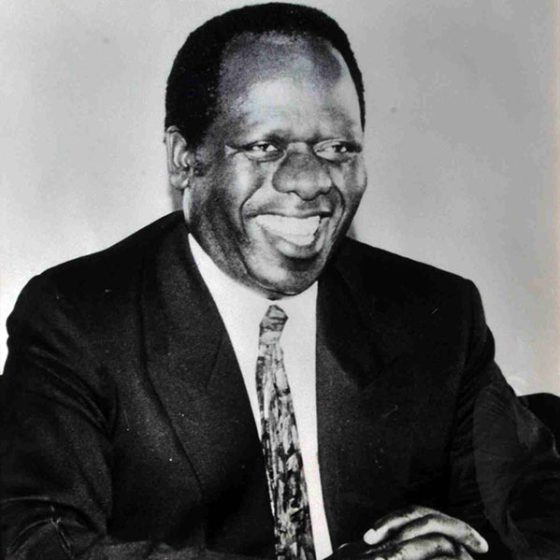
Party Leader
Hon. Musikari Nazi Kombo
2003 – March, 2011
He crusaded for the enactment of ‘Anti-corruption Laws’ and ‘The Political Parties Act 2007’. He was a shrewd diplomat, negotiator and a ‘political systems engineer’. He furthered the Party’s coalition-building strategy and ‘dialogue’ on national issues.
He expanded FORD-Kenya’s influence in the PNU Government with the appointment of eleven Party Ministers.
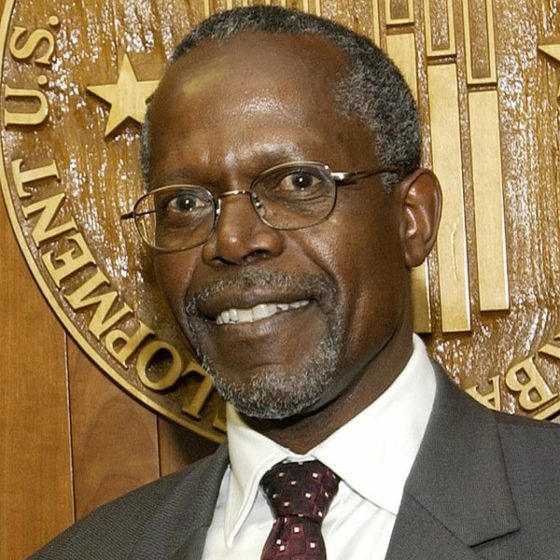
Party Leader
Hon. Moses Masika Wetang’ula
March, 2011 – To Date
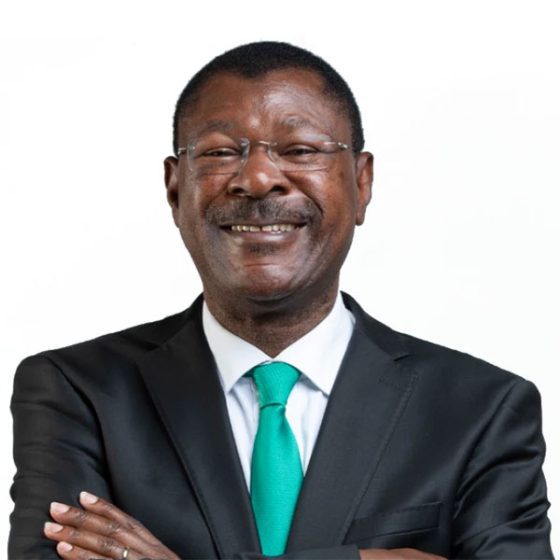
Chaos in FORD helped to keep dictator Moi in power for more than ten years until 2002 when Raila Odinga joined hands with Mwai Kibaki and brought the Moi-sponsored new KANU boys of Uhuru Kenyatta and William Ruto to their knees and deposed the Moi fascist regime which was the beginning of democratic Kenya after decades of dictatorship.
FORD wasted a golden opportunity to put Moi out of his dictatorship and that is what some new rising dictators and political opportunists were hoping would happen to ODM.
That is not happening in Azimio because opposition politicians have grown and learned from past mistakes. Azimio is standing very united and is supporting Raila’s bid for the AU job with no hidden agendas.
Now after we finish with the toxic Kenya politics it is necessary to look into what Raila Odinga can do as AU chairman to help the continent develop to new heights.
The first thing for Raila Odinga in AU is to be a voice of unity and justice for all African peoples and countries. There is a mess in Sudan right now that even the UN does not care about as if they are saying if those Africans want to kill themselves, let them go ahead.
Dealing with problems like what is happening in Sudan is the first job of the AU as a whole and Raila as AU chairperson will have to focus on that. There are problems in Senegal and other countries in West Africa. Ethiopia has problems with neighboring countries including Somalia. Those are big issues to be dealt with.
Raila Odinga apart from doing the traditional work and consultations the AU must expand the AU mandate working with African leaders to include key areas that could bring unprecedented development to the continent.
What Can AU do to address Climate Change and related Development for Africa?
How fighting climate change can be turned into a development tool for every part of the continent is a big issue the AU must address and they already have very detailed policy frameworks. The planning must now be put in place including working with the international communities and agencies to bring real climate change work and development in Africa and that starts with funding for practical projects.
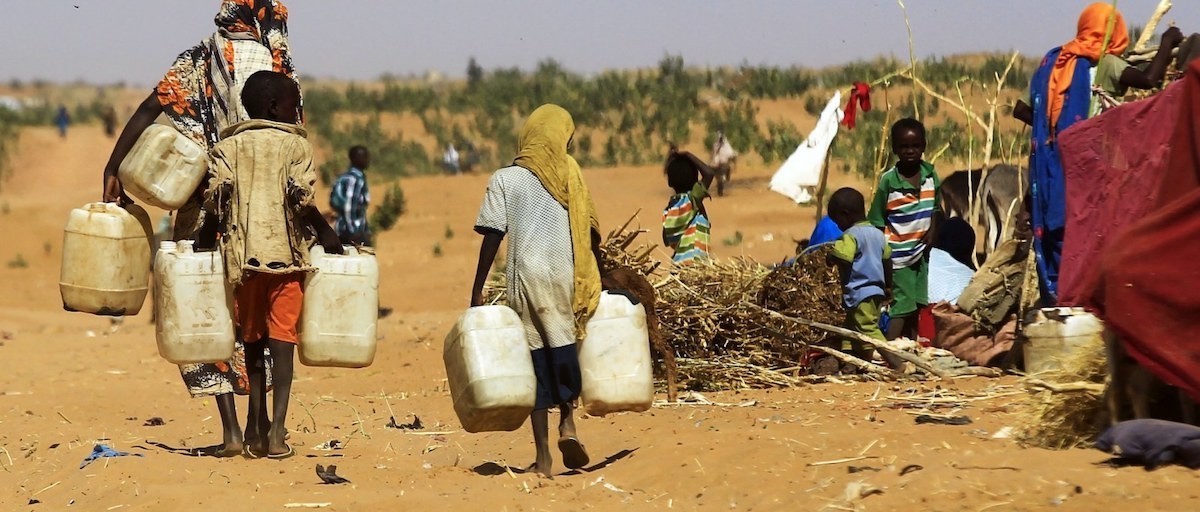
According to Institute of Social Security (ISS) climate change poses serious security threats in Africa. Global organizations, regional communities and countries are increasingly recognizing this fact, but that isn’t enough – urgent action is needed.
In April, United States President Joe Biden convened a Leaders’ Summit on Climate for 40 world leaders, including from Nigeria, South Africa, the Democratic Republic of the Congo (DRC), Gabon and Kenya. The meeting included a theme on responding to the global security challenges posed by climate change.
In early May, the Stockholm International Peace Research Institute’s (SIPRI) Stockholm Forum on Peace and Development included a climate change session. World leaders, researchers and practitioners talked about the importance of reducing climate security risks in peacekeeping and peacebuilding and factoring in a climate perspective when dealing with violent extremism.
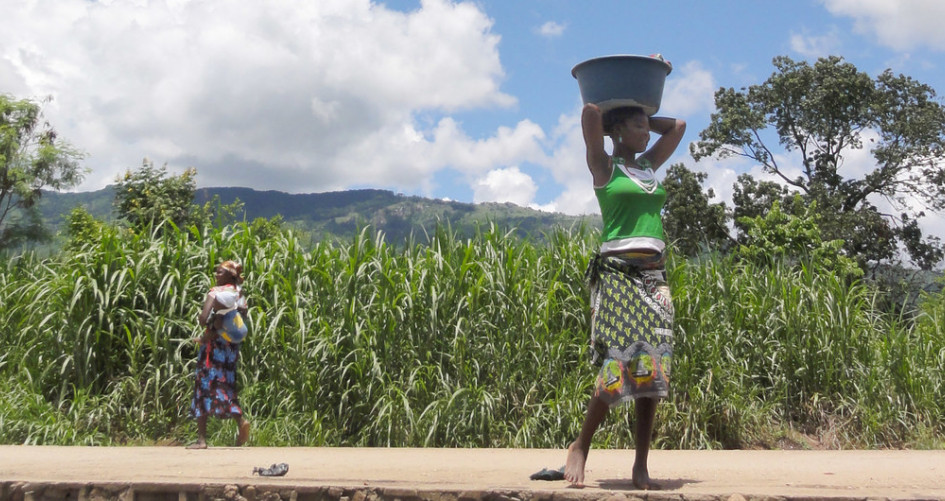
The State of the Climate in Africa 2019 report, a multi-agency publication coordinated by the World Meteorological Organization (WMO), provides a snapshot of current and future climate trends and associated impacts on the economy and sensitive sectors like agriculture. It highlights lessons for climate action in Africa and identifies pathways for addressing critical gaps and challenges.
“This report shows increasing climate change threats for human health, food and water security and socio-economic development in Africa. Because of this, we need accurate and current data for adaptation planning,” said Ovais Sarmad, Deputy Executive Secretary, UN Climate Change.
“Science-based climate information is the foundation of resilience building, a cornerstone of climate change adaptation, as well as an oasis for sustainable livelihoods and development. The State of Climate Report for Africa has, therefore, a critical role to play in this respect, including in informing our actions for achieving the goals of the Africa Agenda 2063,” said H.E. Josefa Leonel Correia Sacko, Commissioner for Rural Economy and Agriculture of the African Union Commission.
Food security impacts
In the drought-prone sub-Saharan African countries, the number of undernourished people has increased by 45.6% since 2012 according to the Food and Agriculture Organization of the United Nations (FAO).
Agriculture is the backbone of Africa’s economy and accounts for the majority of livelihoods across the continent. Africa is therefore an exposure and vulnerability “hot spot” for climate variability and change impacts.
Key risks to agriculture include reduced crop productivity associated with heat and drought stress and increased pest damage, disease damage and flood impacts on food system infrastructure, resulting in serious adverse effects on food security and on livelihoods at the regional, national and individual household levels.
By the middle of this century, major cereal crops grown across Africa will be adversely impacted, albeit with regional variability and differences between crops.
Health impacts
Increases in temperature and changes in rainfall patterns also significantly affect population health across Africa. Warmer temperatures and higher rainfall increase habitat suitability for biting insects and the transmission of vector-borne diseases such as dengue fever, malaria and yellow fever.
In addition, new diseases are emerging in regions where they were previously not present. In 2017, an estimated 93% of global malaria deaths occurred in Africa. Malaria epidemics often occur after periods of unusually heavy rainfall. In addition, warming in the East African highlands is allowing malaria-carrying mosquitoes to survive at higher altitudes.
Economic impacts
According to the International Monetary Fund, adverse consequences of climate change are concentrated in regions with relatively hot climates, where a disproportionately large number of low-income countries are located.
Since 2015, the Nationally Determined Contributions (NDCs) to the Paris Agreement have become the main instrument for guiding policy responses to climate change. Fifty-two (52) African countries have submitted their first NDCs and are now in the process of submitting revised NDCs in 2020.
Africa has made great efforts in driving the global climate agenda. This is demonstrated by the very high levels of ratification of the Paris Agreement – over 90%. Many African nations have committed to transitioning to green energy within a relatively short time frame. Clean energy and agriculture are, for example, prioritized in over 70% of African NDCs. This ambition needs to be an integral part of setting the economic development priorities of the continent.
One promising approach throughout the continent to reducing climate related risks and extreme event impacts has been to reduce poverty by promoting socioeconomic growth, in particular in the agricultural sector. In this sector, which employs 60% of Africa’s population, value-addition techniques using efficient and clean energy sources are reported to be capable of reducing poverty two to four times faster than growth in any other sector.
Solar-powered, efficient micro-irrigation, for example, is increasing farm-level incomes by five to 10 times, improving yields by up to 300% and reducing water usage by up to 90% while at the same time offsetting carbon emissions by generating up to 250 kW of clean energy.
Women constitute a large percentage of the world’s poor, and about half of the women in the world are active in agriculture – in developing countries, this figure is 60%, and in low-income, food-deficit countries, 70%. Reducing poverty by means of growth in Africa’s agricultural sector is therefore of particular benefit to women. It also may be the case that in some instances, women do not have access to weather and climate services; it is important that all individuals be provided with access to these services in order to enhance their individual resilience and adaptive capacity.
The relevant WMO press release is available here and the full report is available here.
What Can Raila Odinga as AU Chairperson do to help fight climate change in Africa?
Work with the AU Commission on Climate Change and African heads of states to bring about real practical development initiatives to fight climate change in the continent instead of endless conferences and signing all sorts of agreements that nobody ever implements.
The first and most effective start for that is for the AU is to develop a plan and get international funding for African countries to cultivate crops, plant trees and fruits in every piece of arable land in Africa.
We have millions of people starving in Africa, Kenya included, and their arable land is sitting idle in front of their homes because they have no means and resources to plough the land and use it for agricultural production. The AU must find ways to work with African governments and the international community to come up with plans to support rural communities across the continent to productively use all arable land they have and extend usable land.
Raila as AU chairperson can also go outside the box and work with international organizations like UNEP with its headquarters in Kenya to create programs to help schools and those young people plant trees including fruits in their school compounds all across the continent.
Go to our schools like in Kenya which I know and the entire place is covered in messy grounds with kids covered in dust from head to toe. Why can Africa not turn these schools into centres of climate change efforts and turn their schools all covered in green beautiful trees and grass. The students and pupils would love to do that and make their schools look nice and healthy.
Third Raila should work with the AU and international agencies to promote solar energy at every level. In Europe and North America, solar energy is funded at great levels and citizens are encouraged to develop and use solar energy for their daily needs like supplying electricity and being a source power for motor bikes, cars and even trains. In those countries they are lucky to have sunshine three months a year and yet they are making that effort and it is working for them.
In Africa we have sunshine all year round and if we develop the right solar technology we will have solar power for the whole year. The international community is desperate to have solar energy all across the world but in reality Africa has the best potential for that because we are blessed to with a lot of sunshine.
Every country in the world uses their most abundant resources for development. Countries with huge oil supplies are super rich because they sell their oil. African countries have abundant sunshine and of course we cannot export it but Africa can use that to produce clean energy which is one of the most urgent needs for humanity today.

Maintaining solar panels in Mali: Africa can tap its plentiful sunshine to generate electricity.
If through the AU, the African governments can develop a credible solar power production and use then the funding for those projects will be limitless. But we cannot afford fake half hearted projects that never get off the ground and that is why we have no funding for solar energy because we have no plans at all.
If Africa develops good plans for solar energy the whole world will come over to help us build networks of those solar panels which is the engine of solar power. One thing that can be done is to train our young people to build and maintain solar panels all across the continent. That will generate clean energy and create millions of jobs across the continent.
I can imagine in my small town in Kenya which is growing big time if we had a policy supported by the government which requires that every single shop, business places, schools, hospitals will have to use solar power instead of our expensive electricity which goes off every ten minutes, peoples’ lives would change significantly for the better as well as the economy and imagine what impact that would have on climate change and economic development.
The other area of solar energy for Africa that the AU should vigorously promote is to have solar energy in every home in Africa particularly in the rural areas where people live in darkness and use wood fire to cook. A solar power system developed for homes in Africa would be a game changer for clean energy and electrification of the continent.
What Can Raila as AU chairman do to promote women rights and gender equality in Africa?
Women grow 70% of Africa’s food. But have few rights over the land they tend
World Economic Forum Report.
Mar 21, 2018

Nearly half of all smallholder farmers are female, yet women own less than 20% of the land.
What’s the World Economic Forum doing to accelerate action on Gender Inequality?

Gender Inequality
It is important to support efforts like these that bring women farmers more rights and equality in their work.
Women farmers are busy. They tend the land, milk the cows and take care of their families. Not only are women farmers constantly working to feed and care for their family, but they also feed a bigger family; the world’s growing population. If you had a fruit or vegetable today, there’s 43% chance it was produced by a female farmer.
Studies show that women account for nearly half of the world’s smallholder farmers and produce 70% of Africa’s food. Yet, less than 20% of land in the world is owned by women and over 65% of land in Kenya is governed by customary laws that discriminate against women, limiting their land and property rights. This means that women farmers have to access land through either their husbands or sons. Sometimes these male family members move to the cities leaving women behind to tend the land – land they have no right to own, use as collateral or sell the output without consent from the men.
Why should women own the land?
Research shows that if women had the same access to productive resources as men, they would increase the yields of farms by 20%-30% and reduce hunger by up to 17%. In addition, women plough back profits to their households, therefore alleviating poverty from the bottom up.
Given that they have vast indigenous knowledge of local plant species, this helps them provide a wide variety of nutritious food for their family, therefore curbing malnutrition at a household level. This means that by limiting women’s rights to land and other assets, we are denying ourselves the opportunity to increase food production, reduce hunger and limit malnutrition.
Most societies remain predominantly patriarchal and women are consistently marginalised due to societal norms. To create change, we need bottom-up solutions that bring both women and men together to come up with solutions, like in the case of Naatum women’s group.
Legislation alone is not enough to change society’s views on women’s property rights. The legal processes as they stand are expensive in terms of money and time and can sometimes be counter-effective to the desired outcome, as it might create hostility between the men and women in these societies. But in the long-run, such changes can improve a community.
As former US President Barack Obama said: “Communities that give their daughters the same opportunities as their sons, are more peaceful, are more prosperous and develop faster.” This is as true in the agriculture sector, as it is for any industry.
To be clear, I am not saying the responsibility of feeding the world’s growing population or taking care of the family rests solely on the female farmer, nor am I saying female farmers should only focus on food production and not take part in agricultural innovation and research.
The point here is, women are currently the workforce for food production, yet they have no access to the very basic tools required to produce food. Closing the gender gap in agriculture and supporting women in their quest to have land ownership rights and access to the right tools will see their efforts quadruple, and will help us achieve Sustainable Development Goals.
Specific Plans needed to Advance Women Rights and Development.
Women’s rights and gender equality is another area where the AU can take leadership and bring along specific proposals working with African governments.
Half the population anywhere in the world are female and a lot of work needs to be done in Africa. In Kenya for example we have a very good legal system where Kenyan women are supposed to constitute at least one-third of any public institutions including the National Assembly.
Thirteen years since Kenyans passed that law it remains a mirage that has not been implemented. In many countries in Africa Women are barely recognized in any capacity in public authority.
Now beyond the rights for women to be of part of any representation in governance, we have to address the basic rights of women in Africa in our daily lives as populations and countries. It is the African women who work on farms to produce food products and then make food for whole families. They educate our children and do all the basic things that keep us alive as families, communities and countries.
How can women in Africa grow 70% of Africa’s food and yet they own less than 20% of the land in the continent. Women rights to own land has to be addressed and taken seriously not just because it is about women rights but because it will enhance food production and economic development in Africa.
General economic development for women and access to education and training is also very key to making women in Africa do better and help advance our economies. In education and training there is a lot of stereotype as to what women can do. In most cases it is like it is okay for them to be nurses and housekeepers and maybe teachers. No, women can do everything men do in engineering, construction, transport industry, manufacturing and any other area of human development.
What Can Raila Odinga as AU chairman do for African Children to have better lives and future?
Africa: Prioritize Education to Safeguard Children’s Rights
First we take a look at the Human Rights Watch Report June 16, 2011
Guarantee Free Education for All; Tackle Abuses

“Angela,” 20, walks with her son near her home after returning from school in Migori county, western Kenya. She is a Form 4 student at a girls-only school. Angela became pregnant when her trainee teacher offered to pay some of her primary school fees in return for sex. Her father tried to marry her off to suitors after she gave birth, but Angela’s mother fought against this and supported her return to school. She wants to go to college and study nursing. © 2018 Smita Sharma for Human Rights Watch
(Nairobi) – African governments across the continent should accelerate efforts and provide adequate funding to ensure that all children can enjoy their right to an education, Human Rights Watch said today to mark the African Union’s Day of the African Child.
Despite important progress over the past decades to ensure wide ratification and implementation of the African Charter on the Rights and Welfare of the Child, many African children are denied their fundamental right to education. This includes tens of thousands of girls who face discriminatory barriers due to pregnancy, parenthood, or child marriage. Children in at least 18 African countries are affected by attacks against education and the military use of their schools.
“Children across Africa face many interconnected abuses and barriers every day to their right to an education,” said Carine Kaneza Nantulya, Africa advocacy director at Human Rights Watch. “Millions of children have been excluded or have fallen behind on their learning during the pandemic, and the economic impact has forced many to take on often hazardous and gruelling work, forcing them to drop out of school.”
The 2021 African Union theme focuses on accelerating implementation of its Agenda 2040, which outlines the AU’s commitments to secure progress for children and young people. Ensuring the right to free, quality, and inclusive education, and reducing inequality in access to quality education is key to carrying out this agenda.
Sub-Saharan Africa had the world’s highest out-of-school rates and the highest rates of exclusion. Thirty-two million primary-school-age children and 28 million adolescents of secondary-school age were out of school. Pandemic-related school closures, and the lack of access to remote offline or online learning, have exacerbated previously existing inequalities.
New estimates from the International Labour Organization and UNICEF found that in Sub-Saharan Africa, the number of children in child labor grew by 16.6 million between 2016 and 2020, driving the first increase in global rates in 20 years.
The African continent has the world’s highest adolescent pregnancy rates, and teenage pregnancies increased during lockdowns in various countries. Across Africa, tens of thousands of students are barred from school because they became pregnant or are parents. Many countries do not have policies for re-entry after giving birth or to manage adolescent pregnancy in schools.
Governments that have made strong commitments in recent years to ensure that pregnant girls and mothers can attend school should swiftly put the promise into action. They should follow the examples of Sierra Leone, Uganda, and São Tomé e Principe, which recently removed bans or amended policies to ensure that pregnant students and parents can resume formal education in public schools.
African governments should urgently adopt plans to redress the right to education for millions of students who are at risk of not returning to school once schools reopen for in-person teaching, as well as those who aged out of compulsory education during the pandemic. They should also ensure that primary and secondary education are fully free, guarantee quality, inclusive education to children with disabilities, strengthen public education systems, and ensure adequate investment and resources for education.
The African Union should also press governments to urgently adopt laws and policies that encourage girls to stay in school, and stop banning pregnant girls from continuing with their education and succeeding academically, Human Rights Watch said.
All African Union countries should endorse the Safe Schools Declaration, an intergovernmental commitment to strengthen the prevention of, and response to, attacks on students, teachers, schools, and universities during wartime. Although 30 African countries have endorsed the declaration – and have been leaders in implementing its commitments over the past year, children, teachers and schools are under attack, including in Burkina Faso, Cameroon, the Democratic Republic of Congo, Ethiopia, and Nigeria.
The ongoing fighting in Ethiopia’s Tigray region is depriving many children of an education, with all parties to the conflict using schools as military bases, and soldiers damaging schools, destroying classrooms, and taking away learning equipment, Human Rights Watch found. In Nigeria, schools and schoolchildren are the target of high-profile attacks and abductions by armed groups, including insurgency groups like Boko Haram.
The African Union should continue its call on member states to ensure that children are safe from attacks against education and restrict the use of schools for military purposes, Human Rights Watch said.
Specific Programs needed:
“To achieve the AU’s Agenda 2040, the African Union should ensure that all African children have access to a good quality education, and that they are safe from violence, exploitation, or discrimination in any context,” Kaneza Nantulya said. “
With his political experience, Raila should work with African governments to come up with practical plans to achieve those objectives. The other area that the Human Rights Watch clearly asked for action to be taken is to stop any aspects of the sexual abuse and exploitation of school girls by the teachers and others as well as stopping child marriages.
What can AUC do for Africa Infrastructure and development?
The last piece we want to touch on briefly is the role of the AU in developing and integrating the Africa infrastructure system in transportation of goods for trade and travel across the continent as well in bringing the economies of the different countries in Africa together. Raila Odinga already worked as the AU chair for infrastructure so he already knows what the problems are out there and how they are being addressed.
Our countries are isolated from each including countries that are very much linked together. Look at East Africa. We have the massive Lake Victoria which has tremendous potential to provide linked transportation opportunities for the countries in the region like Kenya, Uganda, Tanzania and others in the outskirts.
It is strange that during the crazy colonial days one of their priorities was to build railway links between our countries and then bring in Lake Victoria water transport system with lake ships and ports all over including one in Kisumu all of which died after our independence as East African countries. That is just a shame.
AU can start by building transportation links between countries to facilitate trade, economic development and bring countries together. This can be done in East African countries and there is big potential and opportunities in West Africa and in the Southern African countries like South Africa, Mozambique, Namibia, Botswana and many others.
Here is a summary of what can be done written by
Leveraging momentum for Africa’s Infrastructure development and regional integration to build sustainable and inclusive growth on the continent
Finally, the African Continental Free Trade Area (AfCFTA) currently under development will be the largest free trade area by the number of countries involved since the formation of the World Trade Organisation, given Africa’s current population of 1.4 billion people, which is expected to grow to 2.5 billion by 2050.
Africa needs to produce goods and services for domestic consumption and global trade to achieve sustainable economic growth and improve living standards. One of the most prominent necessities on the continent currently, it cannot succeed without adequate high quality linking infrastructures.
The continent still faces serious infrastructure gaps across all sectors, both in access and quality. Most countries lag significantly behind the rest of the world in terms of coverage of key infrastructures including transport, infrastructure, energy, water, ICT, affordable housing… A pipeline of potential projects exists but is slow on actualizing; and whilst funding is available, financial commitment and spend is lacking. Annually, there is a funding gap estimated at $100 billion for infrastructural development.
Why infrastructure development in Africa matters

Dr. Ibrahim Mayaki is the chief executive officer of NEPAD.
In order to boost intra-African trade, we need to improve infrastructure. That’s why we designed PIDA (Programme for Infrastructure Development in Africa), a 30-year strategy by NEPAD, the African Union and African Development Bank (AfDB), focusing on regional trans-boundary projects.
The good thing about PIDA is that it was designed from the bottom up. The priorities are consensual. Given our global context, some of the minimal conditions for structural economic transformation require a less top-down approach in our planning processes.
The 4,500-kilometre highway from Algiers in Algeria to Lagos in Nigeria, for example, would not have been possible without the political and technical support of each of the affected countries. Ten years ago a private sector operator who wanted to discuss a regional project with two governments would be lacking a rational framework.
Good news for next AU chairman?
AU has formulated very well worked out strategic framework on how the continent can deal with the key issues like fighting climate change, gender equality and development, protecting and helping children in our schools and homes as well as on infrastructure development. AU has also made very key links with the international community and global development agencies all over the world to make these projects work.
The big challenge for the next AU chairman is to have concrete plans and funding to fully implement and achieve the AU strategic goals for development in every part of the continent and that requires working with African leaders and governments to make sure their plans come to life. That is the job in front of Raila Amolo Odinga should he become the AU chairman.









